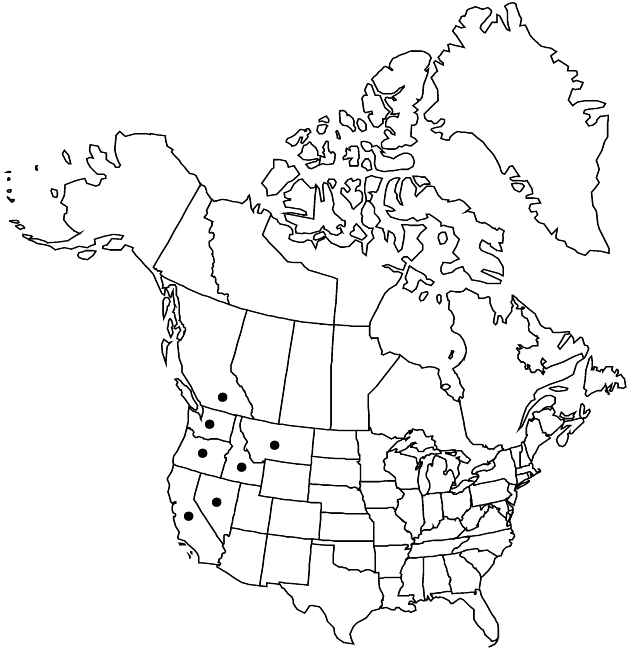Madia exigua
Proc. Amer. Acad. Arts 8: 391. 1872.
Plants 1–30(–50) cm, self-compatible (heads not showy). Stems hirsute and glandular-pubescent, glands yellowish or purple, lateral branches seldom surpassing main stems. Leaf blades linear, 0.2–4 cm × 0.5–2 mm. Heads in open, corymbiform arrays (peduncles ± filiform). Involucres depressed-globose, 2.5–5 mm. Phyllaries ± hirsute and glandular-pubescent as well, glands golden yellow, apices ± erect, sulcate. Paleae mostly persistent, connate 1/2+ their lengths. Ray florets 1–8; corollas pale yellow, laminae 0.7–1 mm. Disc florets 1(–2), bisexual, fertile; corollas 1–1.8 mm, glabrous; anthers yellow to brownish. Ray cypselae black or brown, dull, compressed (strongly arcuate), beaked (beaks adaxially offset, curved). Disc cypselae obovoid, weakly compressed. 2n = 32.
Phenology: Flowering Apr–Jul.
Habitat: Openings in grasslands, meadows, shrublands, woodlands, and forests, disturbed sites, often sandy, gravelly, or clayey soils, sometimes serpentine
Elevation: 30–2500 m
Distribution

B.C., Calif., Idaho, Mont., Nev., Oreg., Wash., Mexico (Baja California).
Discussion
Madia exigua occurs in seasonally dry situations in much of western North America outside the warm deserts. Morphologically, M. exigua is somewhat similar to Hemizonella minima, which (unlike M. exigua) has subumbellate arrays of heads and obcompressed, sparsely hairy ray cypselae.
Selected References
None.